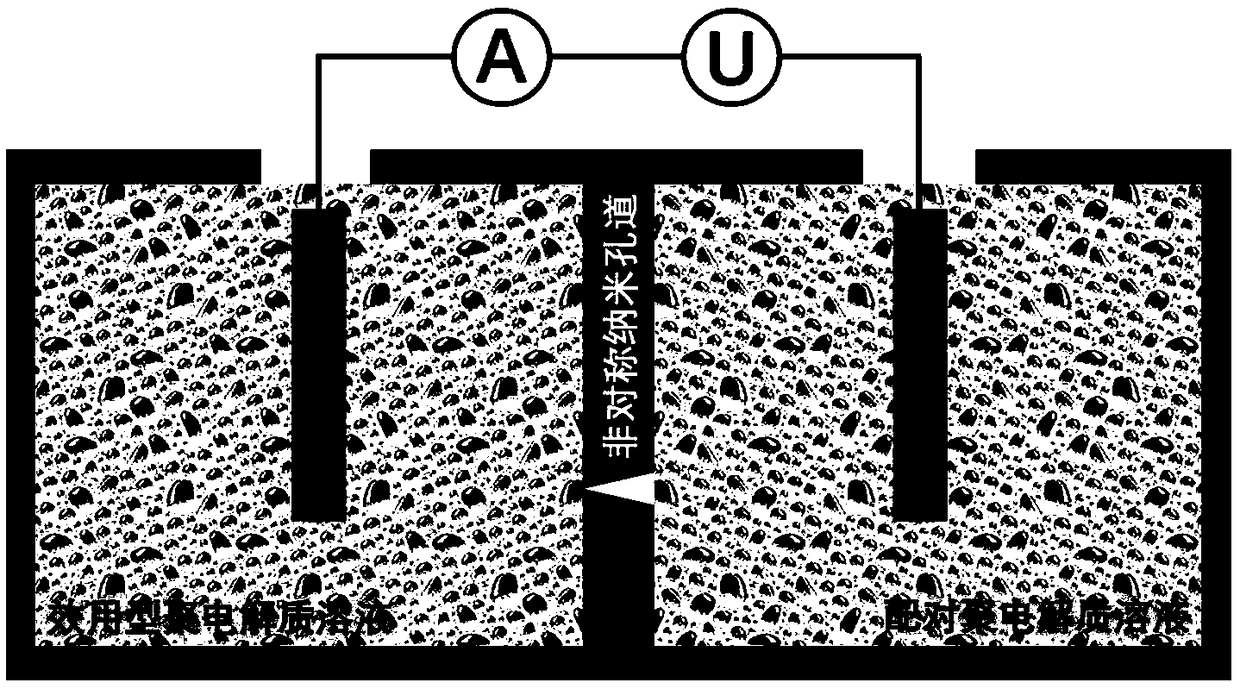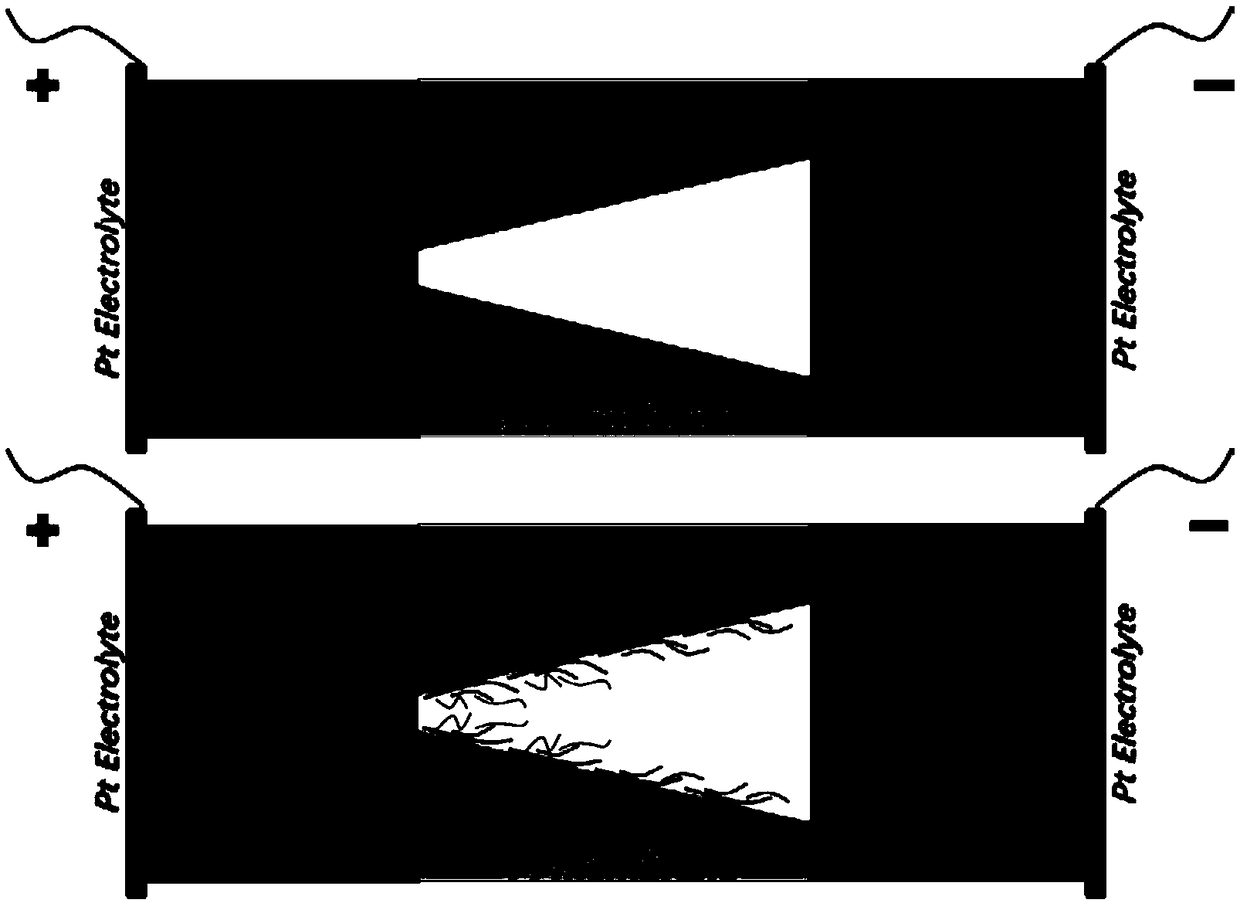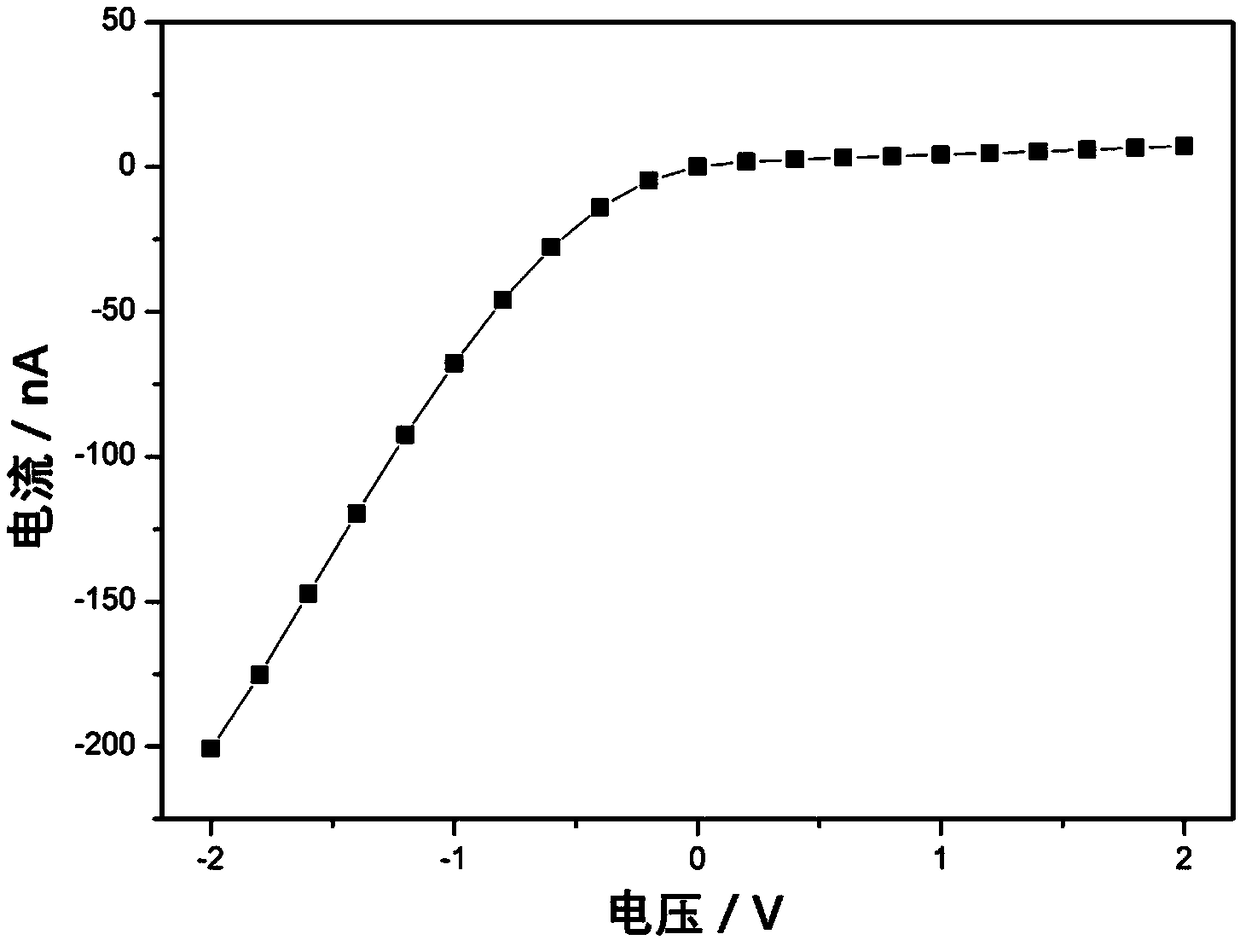Modifying method of bionic nanopores, bionic nanopores and their application
A biomimetic nano-modification method technology, applied in the direction of material electrochemical variables, etc., can solve the problems of limiting the selection range of polyelectrolytes and the inability to modify the response model, achieving the effect of realizing repeated use, widening the selection range, and ensuring the response effect
- Summary
- Abstract
- Description
- Claims
- Application Information
AI Technical Summary
Problems solved by technology
Method used
Image
Examples
Embodiment 1
[0069] Preparation of asymmetric biomimetic nanopores
[0070] For the polyimide (PI) film bombarded by heavy ions, asymmetric nanopores were prepared by track etching. The etching solution used was a NaClO solution with an available chlorine content of 14%. It is a 1M KI solution, etched at 60°C for 3.5h, and washed with deionized water to obtain a PI film with asymmetric biomimetic nanopores with a large pore size of 300nm.
[0071] Use Ag / AgCl electrode, test -2.0V~2.0V in 0.1M KCl solution and measure its volt-ampere characteristic curve at intervals of 0.2V, calculate the rectification ratio as 28 based on the current at -2.0V and 2.0V, and its volt Safety characteristic curve such as image 3 shown.
Embodiment 2
[0073] Modified asymmetric biomimetic nanopores
[0074] like figure 1 As shown, the PI membrane with asymmetric nanopores prepared in Example 1 was placed in a 5% polydiallyldimethylammonium chloride (PDMC) solution and a 7% poly Between styrene sodium sulfonate (PSS) solutions, the small pore end of the PI membrane faces the PDMC solution side, and the large pore end faces the PSS solution side. Apply a voltage of 1V using a Pt electrode, wherein the platinum electrode in the PSS solution is the negative electrode, and the platinum electrode in the PDMC solution is the positive electrode. After applying an electric field for 400s, the PI film is taken out, and then washed with deionized water to obtain a modified biomimetic nanometer. Pore PI membrane.
[0075] Use Ag / AgCl electrode, test -2.0V~2.0V in 0.1M KCl solution and measure its volt-ampere characteristic curve at intervals of 0.2V, and calculate the rectification ratio as -191 based on the current at -2.0V and 2....
Embodiment 3
[0078] Modified asymmetric biomimetic nanopores
[0079] device reference figure 1 As shown, but the utility polyelectrolyte solution and the paired polyelectrolyte solution are changed, specifically, the PI membrane with asymmetric nanopores prepared in Example 1 is placed in a mass concentration of 2% polyallylamine hydrochloride ( PAAm) solution and a mass concentration of 3% p-aminophenylboronic acid-modified sodium polyacrylate (PAANa-APBA) solution, wherein the large pore end of the PI membrane is placed towards the PAAm solution side, and the small pore end is towards the PAANa-APBA solution side. Use a Pt electrode to apply a voltage of 1V, wherein the platinum electrode in the PAANa-APBA solution is the negative electrode, and the platinum electrode in the PAAm solution is the positive electrode. After applying an electric field for 400s, the PI film is taken out, and then washed with deionized water to obtain a modified PI film. PI membranes with biomimetic nanopor...
PUM
| Property | Measurement | Unit |
|---|---|---|
| pore size | aaaaa | aaaaa |
| pore size | aaaaa | aaaaa |
| pore size | aaaaa | aaaaa |
Abstract
Description
Claims
Application Information
 Login to View More
Login to View More - R&D
- Intellectual Property
- Life Sciences
- Materials
- Tech Scout
- Unparalleled Data Quality
- Higher Quality Content
- 60% Fewer Hallucinations
Browse by: Latest US Patents, China's latest patents, Technical Efficacy Thesaurus, Application Domain, Technology Topic, Popular Technical Reports.
© 2025 PatSnap. All rights reserved.Legal|Privacy policy|Modern Slavery Act Transparency Statement|Sitemap|About US| Contact US: help@patsnap.com



